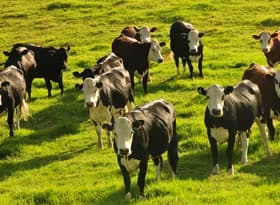Border exemptions: a more pragmatic approach to immigration?
The Government recently announced additional visa exemptions for the dairy, meat processing, forestry and wood processing industries. To what extent will these additional workers boost the sector’s workforce, and do they signal a more pragmatic approach to immigration from the Government?
Additional border exemptions
Under its reconnecting strategy, the government has been touting the 1,580 additional workers that from 12 April will be able to come to New Zealand for jobs in the dairy, meat processing, forestry and wood processing industries. This is on top of the 450 border exemptions announced for meat processors and dairy farm workers last year.
Some of these industries have struggled with COVID-19 restrictions - social distancing has been a challenge for meat processing plants, for example. But on the whole, agricultural exports have held up impressively throughout the past two years. With agricultural exports predicted to hit $50bn this year, our food and fibre industries will play a big role in New Zealand’s economic recovery, if only employers had the workers they need.
Breaking down the Government’s announcements, the numbers are as follows.
- The border exemption for 150 meat processors, introduced last year, has been increased by 500 to 650.
- The border exemption for 300 dairy farm workers, introduced last year, has been increased by 500 to 650.
- Border exemptions have been introduced for 300 silviculture forestry workers and 280 wood processors and manufacturers.
- Last year, the government also introduced border exemptions for 50 veterinarians.
Border exemptions in context
We don’t have any information about the current extent of skill shortages in the dairy, meat processing, forestry and wood processing industries. Although, it’s likely the industries themselves put estimates to the government to support their case for border exemptions. But we can look at how the number of exemptions stack up compared with the number of people currently working in these industries and the number of migrants currently working in these industries.
As a proportion of total employment, the border exemptions don’t seem like anything to write home about, making up around:
- 2% of dairy cattle farming employment,
- 3% of meat processing employment,
- 4% of log sawmilling, wood chipping, and timber resawing and dressing employment, and
- 5% of forestry and logging employment.
However, digging deeper and bearing in mind that these border exemptions are about meeting workforce shortfalls, it’s clear that if enough workers can be attracted to fill the quotas the effect on each of these industries is potentially significant.
Dairy
Employment in the broader agriculture sector fell by just over 2,500 between December 2019 and December 2021. A rise in the number of domestic workers employed in the sector has been offset by falls in the number of people employed on Working Holiday Scheme, Recognised Seasonal Employer and Essential Skills visas.
In December 2021, just over 3,800 people were employed in the agriculture sector on Essential Skills visas. Adding in other work visas brings the total to just under 7,300. Here I have included only multi-year work visas. This excludes Working Holiday Scheme, Recognised Seasonal Employer migrants because the Government is dealing with through other visa streams. We don’t know how many work visa migrants are working in the dairy cattle farming industry but an additional 650 in dairy is a significant addition to the current migrant workforce of 7,300.
Meat processing
Employment in the broader food product manufacturing sector fell by just over 2,400 between December 2019 and December 2021. There were falls in the number of domestic workers employed in the sector as well as a significant fall in the number of people employed on Working Holiday Scheme visas.
In December 2021, around 1,900 people were employed in the food product manufacturing sector on Essential Skills visas, adding in other work visas brings the total to roughly 5,400. We don’t know how many of these migrants are working in meat processing industry, but an additional 650 in meat processing is not to be sniffed at.
Forestry
Employment in forestry and logging rose by around 370 between December 2019 and December 2021 as the industry was able to attract more domestic workers. The sector employs relatively few migrants – around 30 in December 2021, so an additional 300 migrants will make a big difference.
Wood processing
Employment in wood product manufacturing rose by around 420 between December 2019 and December 2021 as the industry was able to attract more domestic workers. The sector employs relatively few migrants – around 900 in December 2021, so an additional 280 migrants will be a welcome addition to the workforce.
A new pragmatism?
The new Accredited Employer Work Visa (AEWV) opens on 4 July 2022. Combining six previous work visas into one, the Government has promoted the AEWV as being more streamlined and easier for employers to navigate. But there are concerns about the amount of documentation required and the financial costs, which could be a barrier particularly for small employers, as well as Immigration New Zealand’s capacity to process employer accreditation applications in a timely manner.
The Government has also been signalling for some time its desire to rein in lower-skilled immigration, and there’s a sense that the new AEWV has been driven by concerns about migrant exploitation rather than broader issues of skills demand. All this at a time when unemployment is at an historical low, skill shortages through are the roof, and there is the very real prospect of a Kiwi brain drain to Australia. I’m hoping that these recent border exemptions are a sign that the Government is listening to employers’ concerns and will take a more pragmatic approach to immigration going forward.











